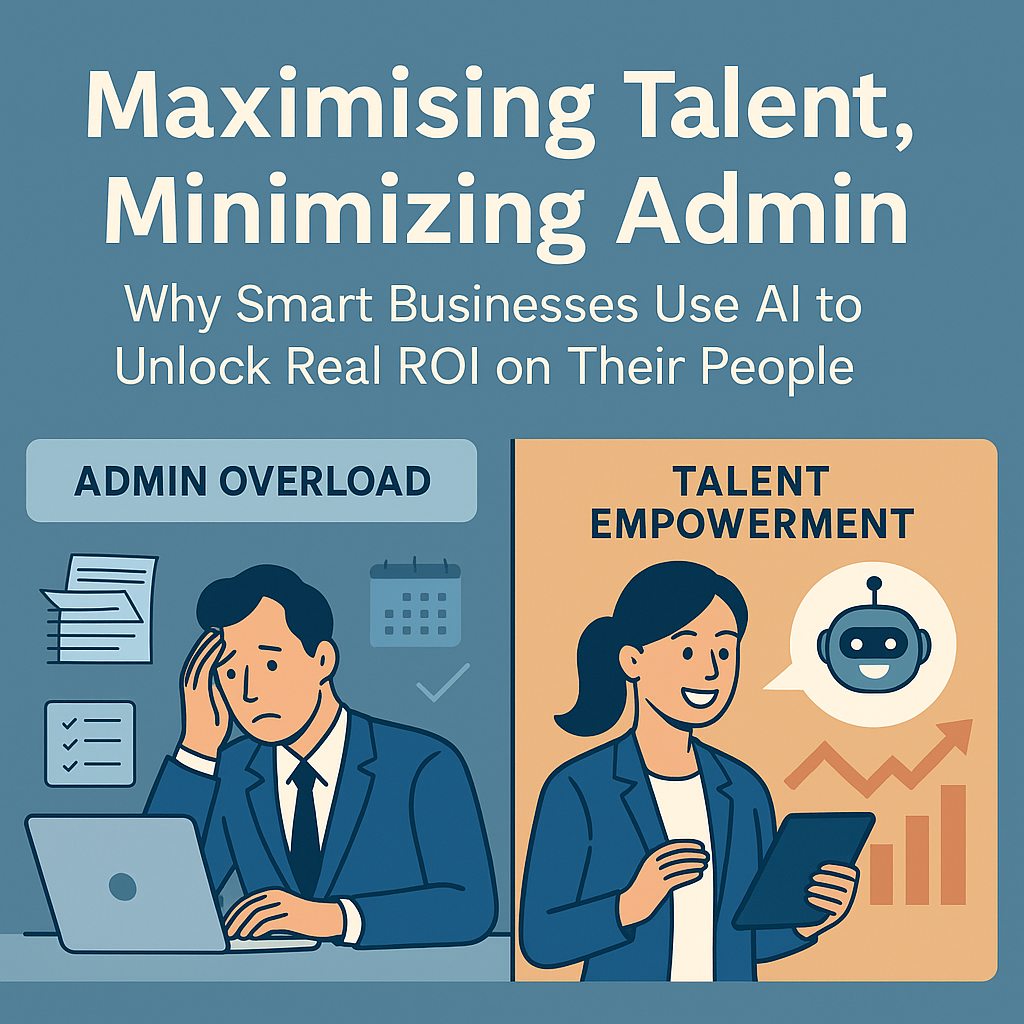Approx reading time: 10 min 41 secs
This is Part 2 of our series on digital marketing tools. You can check out the other parts below:
Introduction: Setting the Stage: Enhancing Marketing Efficiency with Smart Tools
Part 1: Revolutionising Marketing Automation – Smarter Strategies for Better Results
Part 2: The Art of Visual Storytelling – How Design Tools Shape Marketing
Part 3: Data-Driven Decisions – Analytics for Marketing Precision
Part 4: Personalising Audience Engagement – The Role of Email Marketing Tools
Synthesising Success: Integrating Tools for Optimal Marketing Efficiency
Introduction
In marketing, telling stories through visuals is key to catching people's attention and connecting with them. In this blog we’ll look at how graphic design tools have changed storytelling in marketing, making it easier to share complex ideas through engaging pictures, graphics, and videos.
We will explore why visual storytelling is so important, how design tools help, and what challenges you might face. We'll also introduce you to some top tools like Canva, Veed and Visme. These tools help marketers make eye-catching content that speaks to their audience, showing just how powerful good visuals can be in a crowded online world. Let's dive into how these tools can make your marketing stronger, more interesting, and more effective.
The Importance of Visual Storytelling in Marketing
From billboards and magazine ads to Instagram stories and YouTube videos, the way we tell stories in marketing has come a long way. This evolution from traditional to digital has opened up a whole new world of possibilities. Nowadays, with just a few clicks, marketers can create visuals that might reach millions of people around the globe. This shift to digital platforms has made visual storytelling more important than ever.
Why is this? Well, in a world where everyone is constantly bombarded with information, a well-crafted image or a captivating video can cut through the noise like nothing else. Visuals grab our attention fast and can convey complex messages quickly and memorably. That's why using visuals in marketing is essential. They help tell a brand's story in a way that's easy to understand and hard to forget. Whether it's showing off a product, explaining how something works, or sharing a customer's experience, visuals can make your message clear and engaging.
As we dive deeper into how graphic design tools have transformed marketing, keep in mind the incredible power of visuals. They're not just tools to make things look pretty; they're powerful means of communication that can help your brand stand out, connect with your audience on a deeper level, and ultimately drive success in the crowded online world.
Key Features of Top Graphic Design Tools
Ease of Use
Remember when you needed years of design experience or a degree in graphic design to create something visually appealing? Well, those days are gone. Today's design tools are all about making design straightforward and accessible. With intuitive interfaces and drag-and-drop features, anyone can start creating. This means whether you're a seasoned designer or someone with no background in design at all, you can bring your ideas to life. It's all about giving power to the people, letting anyone create stunning visuals that tell their brand's story.
Integration with Marketing Platforms
One of the coolest things about modern design tools is how well they play with others. Integration with social media and other marketing platforms means you can create a design and share it directly where your audience hangs out. This seamless connection between creation and publication simplifies the process, making it easier to maintain a consistent and active online presence. Whether you're scheduling posts for the week or reacting in real-time, these tools have got your back.
Collaboration and Brand Consistency
In any team, being on the same page is crucial, especially when it comes to presenting a unified brand image. Graphic design tools today are built with collaboration in mind. They allow teams to work together, share ideas, and provide feedback all in one place. Plus, with features like brand kits, which store your logos, colour schemes, and fonts, ensuring brand consistency across all your materials has never been easier. This means no matter who in your team is creating, everything they produce will feel like it's coming from the same place – your unique brand.
These key features of graphic design tools are making it easier than ever to tell your brand's story in a visually compelling way. By breaking down barriers to design, simplifying the publication process, and making collaboration a breeze, these tools are essential for any marketer looking to make an impact online. Let's see how these features come to life in some of the top tools on the market.
Empowering Creativity with AI
AI is becoming more and more integrated into graphic design platforms, with a suite of features designed to simplify the creative process and elevate the quality of output. This technology is making it possible for users without a formal background in design to produce great work.
- Simplifying Design Decisions: AI algorithms can offer suggestions and automate decisions that typically require a designer's eye, such as layout adjustments and colour matching, making the design process more intuitive for novices.
- Enhancing Content: Beyond static images, AI is enabling the creation of dynamic content, including automated video editing and voiceovers, enriching content effortlessly.
- Unlocking New Creative Tools: tools like background removal, image generation, and automatic presentation design are simplifying processes that have previously taken hours.
The Broader Impact
The advent of AI in graphic design is about streamlining tasks as well as democratising creativity, offering new possibilities for engagement and storytelling. For businesses, this means being able to maintain a consistent visual identity across campaigns with greater ease and experimenting with new formats without significant investment in specialised skills.
Navigating the Future
As AI technology continues to evolve and integrate more deeply with design tools, we can anticipate a future where the barriers to creating captivating and effective visual content are lowered even further. This progression promises to empower marketers, content creators, and businesses with the tools to tell their stories in more personalised and impactful ways.
Benefits of Design Tools in Marketing
Strengthening Brand Identity
Imagine your brand's visual content as the outfit it wears every day. Just as a sharp suit or a striking dress can make an individual stand out in a crowd, consistent and high-quality visuals can make your brand instantly recognisable.
Design tools are your brand's wardrobe consultants, ensuring that every piece of content, from your Instagram posts to your email newsletters, aligns perfectly with your brand's style.
This consistency builds a strong brand identity that customers can identify and connect with at a glance.
Enhancing Engagement and Conversion
Catching and keeping your audience's attention is the name of the game. Engaging visuals are magnets for eyeballs, drawing people in and encouraging them to stick around, explore, and ultimately, take action.
With design tools, creating these captivating visuals becomes second nature. Whether it's a compelling infographic, a vibrant social media post, or an eye-catching ad, well-crafted visuals can significantly boost engagement rates and conversions.
It's similar to crafting your content into a welcoming book cover that makes people want to pick it up, turn the pages, and discover what's inside.
Streamlining Content Creation
Let's face it: efficiency is gold. Design tools act as a shortcut to creating professional-grade visual content, cutting down on the time and resources traditionally required for production.
With templates, drag-and-drop interfaces, and easy-to-use editing features, these tools enable you to produce more content in less time, without compromising on quality. This means you can keep your content fresh and your audience engaged without burning out your creative team.
By tapping into the power of graphic design tools, marketers can make their brands look good and drive real results. From building a recognisable brand identity to boosting engagement and streamlining content creation, the benefits are huge.
Challenges and Solutions
Navigating the world of visuals comes with its own set of hurdles. Let's go over some common obstacles and how to overcome them:
Overcoming Creative Blockades
It happens to the best of us – that moment when the well of creativity seems to run dry. Staring at a blank canvas, trying to conceptualise and design visual content, can feel daunting.
The solution? Dive into the vast libraries of templates and inspirations offered by design tools. Platforms like Canva, VEED, and Visme are treasure troves of ideas, providing a starting point that can spark your creativity. Additionally, stepping away, seeking inspiration from the world around you, or collaborating with team members for a brainstorming session can rekindle your creative flame. Remember, creativity flows more freely when you start with something, no matter how small.
Maintaining Brand Consistency
Ensuring a uniform brand identity across various platforms and campaigns is vital but challenging, especially when multiple team members are involved in content creation. The key to consistency lies in using design tools that offer brand kits and style guides.
These features allow you to store your brand's logos, colour schemes, and fonts, ensuring that every piece of content, whether it’s a social media post or an email newsletter, aligns with your brand's visual identity. Regularly reviewing and updating your brand guidelines can also help keep everyone on the same page, making your brand recognisable and consistent across all touchpoints.
By tackling these challenges head-on with the right strategies and tools, marketers can streamline their visual content creation process, ensuring it's more efficient and impactful.
Top Software for Visual Storytelling
Canva
Canva has become a go-to tool for anyone looking to craft engaging visual stories, whether they're running a small business, leading a marketing team, or just passionate about creating stunning visuals. It stands out for its user-friendliness and ability to cater to both seasoned designers and novices alike.
Canva simplifies the design process, making it possible for anyone to produce professional-quality graphics, presentations, and even videos without needing a background in graphic design.
Our Favourite Features
- Template-Based Design: One of Canva's strongest suits is its vast library of templates. Whether you're creating social media graphics, flyers, or presentations, Canva offers a wide array of pre-designed templates that you can customise to fit your needs. This feature is a massive time-saver and a source of inspiration for users at all levels of design expertise.
- Drag-and-Drop Interface: The simplicity of Canva's drag-and-drop is amazing. It allows users to intuitively select, move, and edit elements within their designs, making the design process smoother and more enjoyable. This ease of use encourages experimentation and creativity, enabling users to bring their visions to life with just a few clicks.
- Brand Kit: For businesses and marketers, maintaining brand consistency is crucial. Canva's Brand Kit feature allows users to store their brand logos, colour schemes, and fonts, ensuring that every design aligns with brand identity. This is invaluable for reinforcing brand recognition and ensuring a cohesive look across all marketing materials.
- AI Image Generator: This enables users to create images from simple text prompts opening up endless possibilities for personalised and creative imagery. Whether crafting visuals for social media, marketing campaigns, or brand storytelling, this tool simplifies the process, making unique and relevant image creation.
Canva's powerful blend of simplicity, usability and versatility makes it an indispensable tool in the visual storytelling toolkit. Its features streamline the design process and empower users to create content that captivates and communicates effectively, putting good design within reach for everyone.
Visme
Visme is a tool that breathes life into your visual content, from presentations and infographics to reports and social media graphics. It's designed for anyone looking to create beautiful, engaging on-brand content, offering an array of features that simplify the creation process with AI.
Visme is the bridge between raw data and story-driven visuals, making it a staple for marketers, teachers, and businesses keen on making their information stand out.
Our Favourite Features
- Interactive Content Creation: What sets Visme apart is its ability to create interactive and animated content. Imagine taking your audience on a visual journey where they can click, scroll, and discover. This makes your content more engaging and enhances the viewer's experience, making your message more memorable.
- Data Visualisation Tools: Let your data tell your stories. Visme excels in transforming numbers and data into visually appealing narratives. With its comprehensive suite of data visualisation tools, including charts, graphs, and maps, you can present complex information in an aesthetically pleasing, easy-to-understand way.
- Template and Asset Library: Visme's extensive library of templates and design assets is a goldmine for creators. Whether you're looking to start from scratch or find inspiration, you'll have access to a wide range of professionally designed templates and visual elements that cater to various industries and purposes. This library ensures that you're never starting from a blank page, giving you a head start in crafting your visual story.
- AI TouchUp: Erase and replace objects, remove backgrounds, unblur images, enlarge images without losing quality, and more. AI TouchUp simplifies the editing process, ensuring that users can easily improve their visuals, whether preparing images for a presentation or refining visuals for a campaign.
Visme empowers you to go beyond simple visuals, enabling the creation of content that's seen interacted with and remembered. Its blend of interactive features, data visualisation tools, and a rich template library make it a super valuable resource for anyone looking to elevate their visuals.
VEED
VEED is a video editing platform that has quickly become a favourite among marketers, content creators, and businesses looking to push their storytelling into the video era. It's celebrated for its power and ease of use, making professional-quality video editing achievable for everyone. With VEED, the daunting task of video editing becomes an exciting opportunity to creatively engage your audience and tell your story.
Our Favourite Features
- Intuitive Video Editing: VEED's platform is a dream for beginners and seasoned editors alike, thanks to its straightforward editing tools. Trimming, cropping, and adding effects is hassle-free, allowing for quick modifications that look anything but amateur. It's about getting your ideas out there without the tech getting in the way.
- Auto Subtitles and Translation: This is key for reaching a broader audience. VEED's auto-subtitles feature opens your content up to non-native speakers or those with hearing impairments. With the added bonus of translation, your videos are instantly more accessible and inclusive.
- Collaborative Workflow: VEED's collaborative workflow allows multiple users to work on the same project simultaneously. This feature is particularly useful for teams spread out over different locations, enabling real-time feedback and edits. It's a fantastic way to streamline video projects, ensuring that everyone involved can contribute their ideas and insights.
- AI Avatar and Text-to-Voice: This allows users to automatically add narrations and voiceovers with over 50 AI avatars featuring a diverse range of backgrounds, personalities, and voices. This is ideal for bringing life to your educational content, marketing videos, or social media clips.
VEED makes video editing accessible, but genuinely fun. Its combination of user-friendly features and powerful editing capabilities provides everything you need to turn your video ideas into reality. Whether you're looking to create quick social media clips or in-depth promotional videos, VEED has the tools to help your content shine.
Conclusion: The Take Aways
- Visual storytelling is essential for capturing attention and engaging with audiences.
- Graphic design tools democratise design, making it accessible to marketers of all skill levels and enabling them to create compelling visual content.
- Key features such as ease of use, integration with existing marketing platforms, collaboration tools, and brand consistency options enhance the effectiveness of visual marketing strategies.
- Using design tools offers significant benefits, including strengthening brand identity, enhancing engagement and conversion rates, and streamlining content creation processes.
- Overcoming challenges like creative blockades and maintaining brand is simple.
- Top software for visual storytelling:
- Canva offers a user-friendly platform with a vast template library, simple drag-and-drop interface, brand kit for consistency and AI text-to-image generator.
- Visme excels in creating interactive and animated content, with powerful data visualisation tools, an extensive template library and AI TouchUp Tools for advanced image editing.
- VEED simplifies video editing with intuitive tools, auto subtitles and translation for accessibility, collaborative workflow for team projects, and AI Avatar and Text-to-Voice technology for dynamic narration.
- Canva offers a user-friendly platform with a vast template library, simple drag-and-drop interface, brand kit for consistency and AI text-to-image generator.
Stay tuned for the next instalment in our series, where we'll dive into the critical role of analytics tools in marketing.
We'll explore how these tools enhance marketing precision through data-driven decisions, helping marketers fine-tune their strategies for better results: from understanding audience behaviour to measuring campaign performance.









